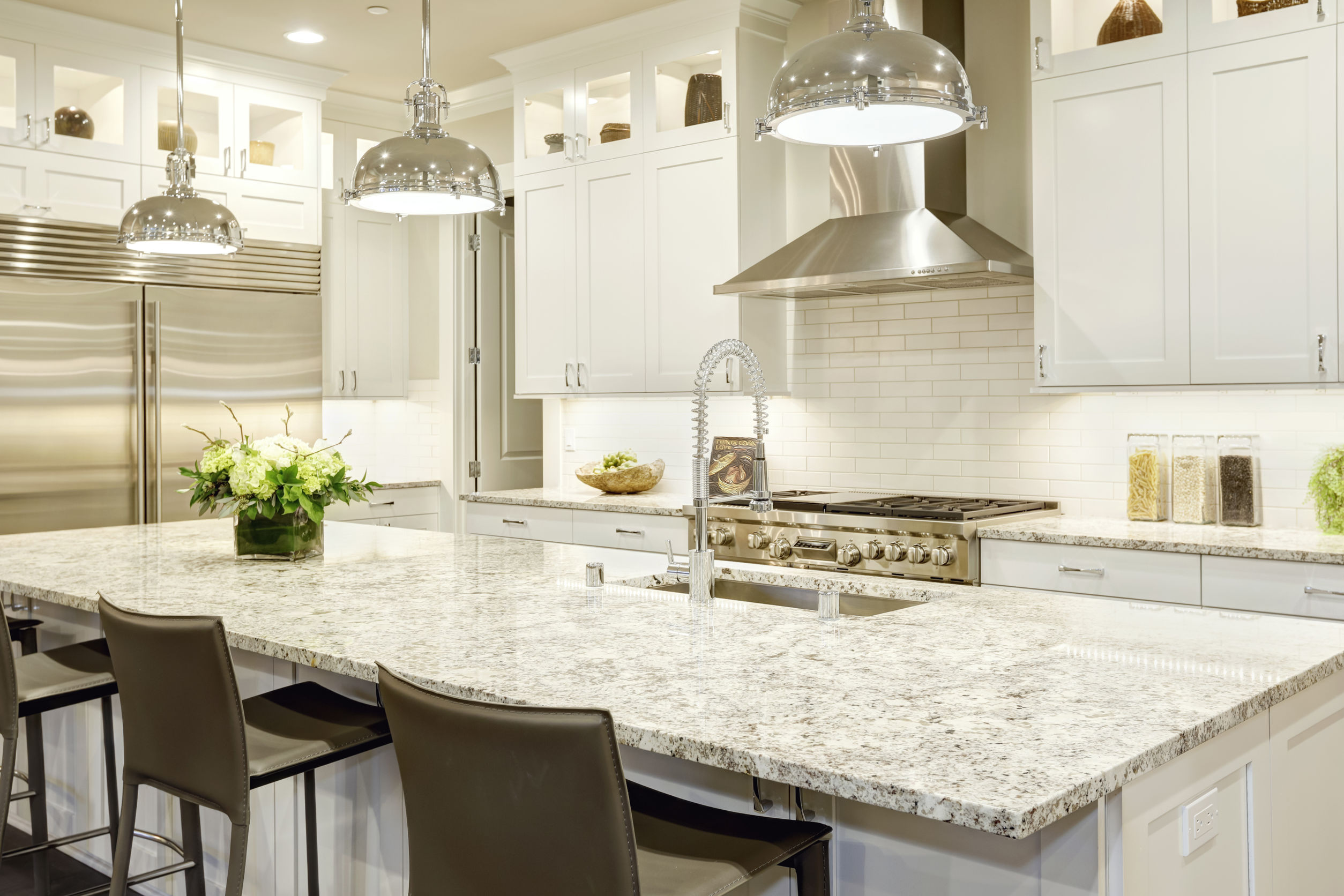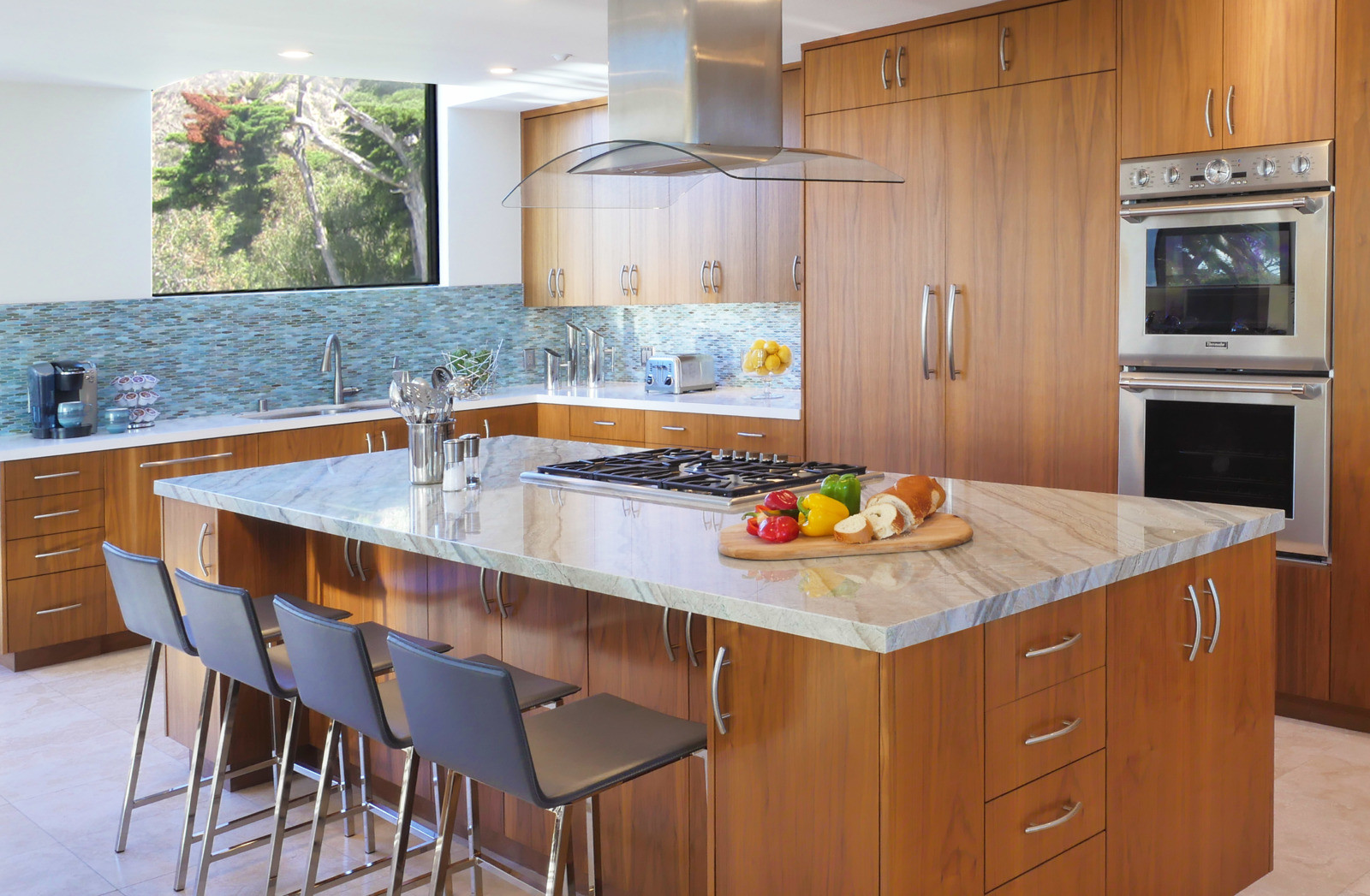Demolition and Preparation: How To Prepare Kitchen Cabinets For Granite Countertops

The first step in preparing your kitchen cabinets for granite countertops is to remove the existing countertops and any other obstacles. This process requires careful planning and safety precautions to ensure a smooth and successful transition.
Removing Existing Countertops
- Before beginning, ensure the area is clear of any obstructions and wear appropriate safety gear, including gloves, eye protection, and a dust mask.
- Disconnect any utilities connected to the countertops, such as the sink, faucet, or garbage disposal.
- If the existing countertop is made of laminate, use a utility knife to score along the seams and then carefully pry it up using a chisel or pry bar.
- For solid surface countertops, like Corian, you may need a circular saw with a diamond blade to cut through the material.
- Remove any screws or fasteners securing the countertop to the cabinets.
- Once the countertop is loose, carefully lift it off the cabinets and dispose of it properly.
Removing Cabinet Doors and Drawers, How to prepare kitchen cabinets for granite countertops
- To remove the cabinet doors, locate the hinges and unscrew them using a screwdriver.
- If the hinges are concealed, use a small pry bar or a putty knife to gently pry them open before removing the screws.
- Once the hinges are removed, carefully lift the doors off the cabinets.
- To remove drawers, pull them out fully and locate the slides or runners.
- Unscrew the slides or runners from the drawer and cabinet frame.
- Carefully lift the drawer out and set it aside.
Cleaning and Preparing Cabinet Surfaces
- After removing the countertops, doors, and drawers, thoroughly clean the cabinet surfaces with a degreaser and a damp cloth.
- Remove any residue, grease, or dirt that could interfere with the new countertop installation.
- Allow the surfaces to dry completely before proceeding to the next step.
Repairing Damaged Cabinet Surfaces
- Inspect the cabinet surfaces for any damage, such as scratches, dents, or cracks.
- Repair any minor damage using wood filler or epoxy.
- For more significant damage, you may need to replace the affected cabinet parts.
- Ensure all repairs are completely dry and sanded smooth before proceeding to the countertop installation.
Tools and Materials
| Tool/Material | Use |
|---|---|
| Utility knife | Scoring laminate countertops |
| Chisel or pry bar | Prying up laminate countertops |
| Circular saw with diamond blade | Cutting solid surface countertops |
| Screwdriver | Removing screws from hinges and slides |
| Pry bar or putty knife | Prying open concealed hinges |
| Degreaser | Cleaning cabinet surfaces |
| Damp cloth | Wiping down cabinet surfaces |
| Wood filler or epoxy | Repairing minor damage |
Cabinet Adjustment and Measurement

Precise cabinet adjustments are crucial for achieving a seamless and functional granite countertop installation. Properly adjusted cabinets ensure a smooth transition between the countertop and the surrounding cabinetry, preventing gaps, uneven surfaces, and potential structural issues. This section will guide you through the essential steps of cabinet adjustment and measurement, ensuring your countertop installation is both aesthetically pleasing and structurally sound.
Cabinet Height Adjustment
Adjusting cabinet heights is necessary to ensure the countertop sits at the desired level and creates a uniform surface. Before making any adjustments, carefully measure the existing cabinet heights and compare them to the desired countertop height. If the cabinet heights are inconsistent, use shims or adjust the cabinet feet to achieve a level surface.
Important: Always double-check your measurements and ensure the cabinets are level before proceeding with the countertop installation.
Cabinet Depth Adjustment
Adjusting cabinet depths is essential for creating a smooth transition between the countertop and the backsplash. Measure the existing cabinet depths and compare them to the desired countertop depth. If the cabinet depths are inconsistent, consider using a combination of shims, cabinet spacers, or modifying the cabinet face frames to achieve a uniform depth.
Important: Ensure the adjusted depth allows for sufficient overhang for the countertop, typically 1.5 inches for a standard backsplash.
Measuring Cabinet Heights and Depths
Precise measurements are essential for a successful countertop installation. Here’s a step-by-step guide for measuring cabinet heights and depths:
1. Measure the cabinet heights: Use a level to ensure the top of the cabinets is level. Measure from the floor to the top of the cabinets at multiple points, including the corners and center.
2. Measure the cabinet depths: Measure the depth of the cabinets from the front face to the back wall. Ensure the measurements are consistent across all cabinets.
3. Record the measurements: Keep a detailed record of your measurements, including the location and any discrepancies.
Ensuring Level Surfaces and Square Corners
Level surfaces and square corners are crucial for a successful countertop installation. Use a level to ensure the cabinets are level both horizontally and vertically. Verify that the corners of the cabinets are square using a carpenter’s square. Any discrepancies in level or square corners can lead to an uneven countertop installation.
Countertop Edge Profiles
The choice of countertop edge profile can significantly impact the overall aesthetic of your kitchen. Consider the style of your cabinets and the desired look when selecting an edge profile.
| Edge Profile | Description | Suitable Cabinet Style |
|—|—|—|
| Eased Edge | A slightly rounded edge, providing a smooth and comfortable feel. | Traditional, contemporary, transitional |
| Beveled Edge | A sloped edge, creating a subtle visual interest. | Traditional, transitional |
| Ogee Edge | A decorative edge with a curved profile, adding a touch of elegance. | Traditional, transitional |
| Bullnose Edge | A rounded edge with a slight overhang, providing a classic look. | Traditional |
| Laminated Edge | A simple, straight edge, ideal for a modern look. | Contemporary, modern |
Installing Granite Countertops

Installing granite countertops requires precision and care to ensure a durable and aesthetically pleasing finish. The process involves proper support, secure fastening, precise cutting and shaping, and meticulous application of adhesives and sealants.
Securing Granite Countertops
Granite countertops require a sturdy and stable base for support. Typically, this involves installing a plywood sub-top over the existing cabinet boxes. The plywood should be at least 3/4 inch thick and cut to the exact dimensions of the countertop. It is secured to the cabinet boxes using screws or construction adhesive. The plywood sub-top provides a flat and even surface for the granite to rest upon, ensuring stability and preventing sagging over time.
Cutting and Shaping Granite
Granite is a hard and durable material that requires specialized tools and techniques for cutting and shaping. The most common method is using a diamond-tipped saw, which can cut through granite with precision. A template is created based on the cabinet configuration, and the granite is cut to the exact dimensions using the template as a guide. For intricate shapes or curves, a CNC router can be used to create precise cuts and contours.
Adhesives and Sealants
Once the granite countertop is cut and shaped, it is secured to the plywood sub-top using a specialized adhesive designed for stone installation. This adhesive provides a strong bond that can withstand the weight of the granite and the stresses of daily use. A sealant is then applied to the edges and seams of the countertop to prevent water penetration and staining. This sealant creates a protective barrier that maintains the integrity of the granite and ensures its longevity.
Finishing Touches
After the granite countertop is installed, finishing touches are applied to enhance its appearance and functionality. This may include:
- Edging: The edges of the countertop are often finished with a variety of profiles, such as eased, ogee, or bullnose, to create a smooth and aesthetically pleasing finish.
- Polishing: The surface of the granite is polished to achieve a desired level of shine and gloss. This process involves using a series of progressively finer abrasive pads to smooth and polish the surface.
- Sink Installation: The sink is cut into the granite countertop and secured using a specialized sealant designed for this purpose.
- Backsplash Installation: If desired, a backsplash is installed behind the countertop to protect the wall from splashes and spills.
Common Countertop Installation Mistakes and Solutions
| Mistake | Solution |
|---|---|
| Insufficient Support for the Countertop | Ensure a sturdy plywood sub-top is installed to support the weight of the granite. |
| Incorrect Cutting and Shaping | Use a template and specialized tools, such as a diamond-tipped saw or CNC router, to ensure precise cuts and shapes. |
| Inadequate Adhesive Application | Use a specialized adhesive designed for stone installation and apply it evenly across the surface of the plywood sub-top. |
| Insufficient Sealant Application | Apply sealant to the edges and seams of the countertop to prevent water penetration and staining. |
| Improper Sink Installation | Use a specialized sealant and ensure the sink is properly secured to the countertop. |
How to prepare kitchen cabinets for granite countertops – Preparing your kitchen cabinets for granite countertops is a crucial step in achieving that luxurious look. It’s similar to how choosing the right wall picture in bedroom can transform the entire space, the right cabinet prep sets the stage for a stunning granite installation.
Ensure your cabinets are level, smooth, and free of any imperfections to ensure a seamless and professional granite countertop installation.
Preparing your kitchen cabinets for granite countertops is a crucial step in your renovation journey. Just like you’d meticulously plan a rose gold bedroom wall decor scheme to create a cohesive look, you want your cabinets to be in top shape for the new granite.
Ensure they’re clean, free of scratches, and properly sealed for a flawless finish that complements your beautiful countertops.